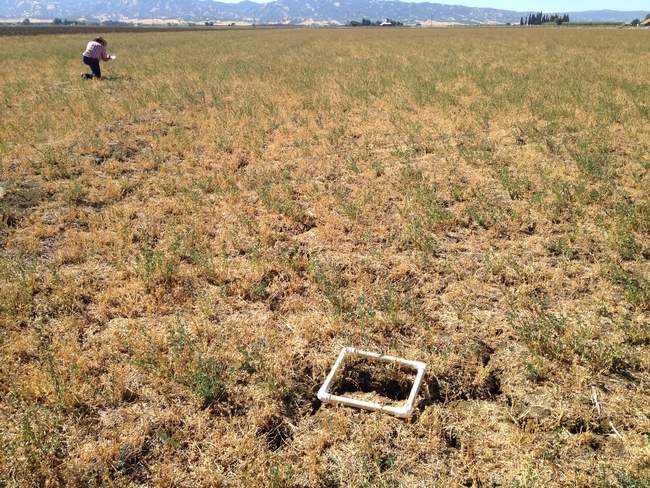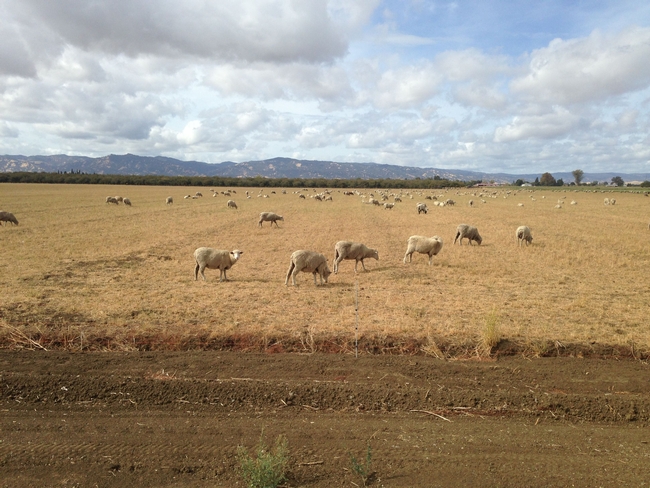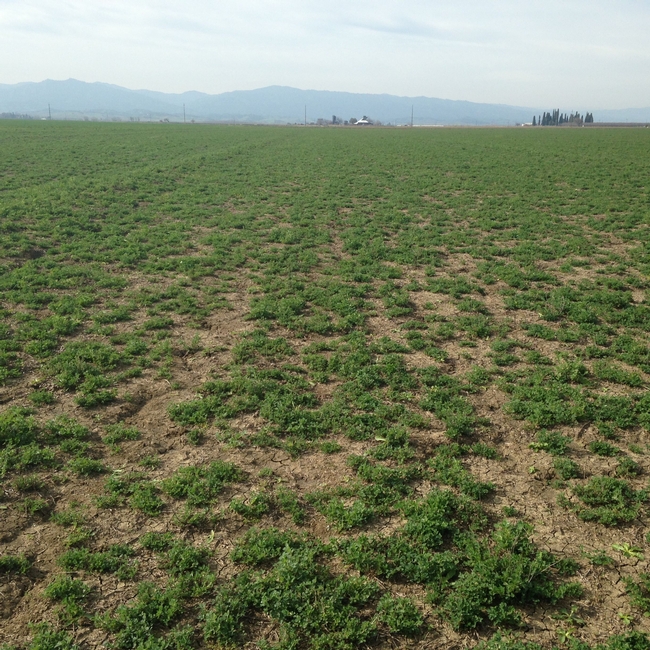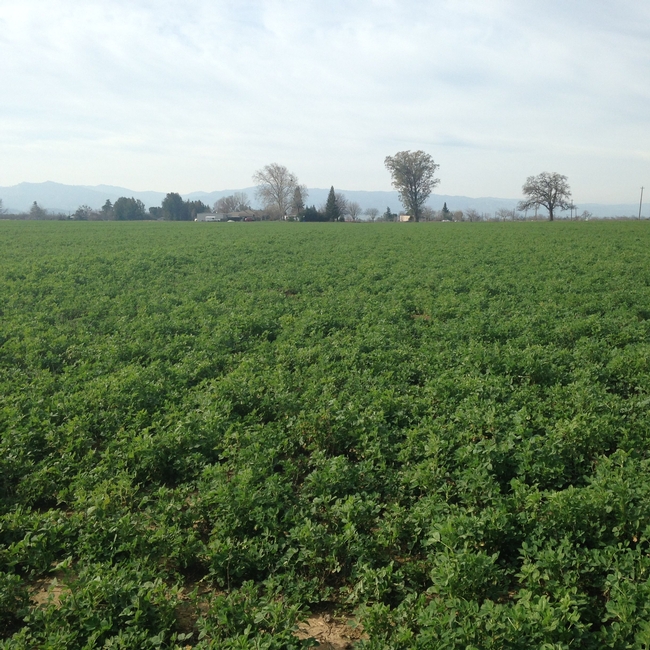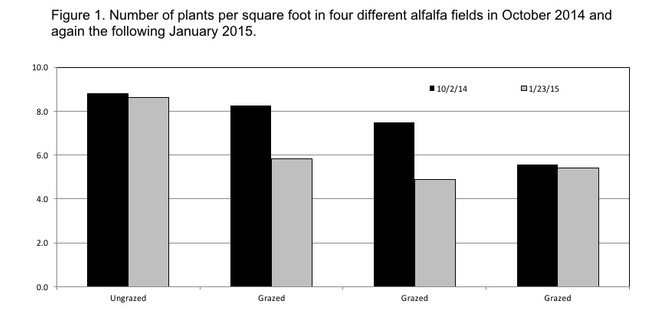Tempted to ‘sheep off' or graze your fall growth after a drought year? You'd better be careful!
Many fields of alfalfa have been ‘dried down' this year, but most will start growing again this fall when rains return. Farmers and grazers are often tempted to graze those fields in the fall/winter period when green growth reappears in October-February.
An observational trial was conducted last year in Yolo County to evaluate the impact of deficit irrigation on alfalfa stands, including those grazed by sheep in the fall.
Stand counts were taken in four alfalfa fields in October 2014 in fields that had not received any water throughout the growing season due to zero water allocation from the district and scant rainfall. One field was used as a control. The fields had mostly dried down, with a few remaining green crowns, indicating there might be a heavy stand loss.
However, in the case of the fields we monitored, the stands mostly recovered. Alfalfa is quite drought tolerant and capable of going into a drought-induced dormancy when deprived of water, though yield is greatly reduced during the season due to lack of water. The crop mostly recovers in the fall after moist conditions return. See: ‘Why alfalfa is the best crop in a drought' blog on this site for why alfalfa is well suited for temporary dry-downs.
However, those alfalfa fields that were grazed by sheep shortly after the plants started to regrow in the fall did not appear to recover as well as the field where there was no grazing (Figure 1). Our small study suggests that it's not a good idea to graze drought stressed alfalfa fields in the fall to reduce thatch when the plants are trying to recover from a long hot, dry summer of no water.
Why is this? Alfalfa plants are resilient; however, if you graze the plants just when they're starting to use all their root reserves to regrow in the fall, this will weaken them further and take them longer to recover. We have seen stand loss in situations where the crop has been weakened by extended drought and growers have taken a greenchop or grazed this crop late in the fall when the plants have just barely begun to regrow.
Let the crop recover from stress before ‘hacking away' with another grazing or harvest!
For these fields that are recovering from drought induced dormancy, delay putting sheep into the fields; instead, use healthy stands where sheep grazing harvests a healthy re-growth. Although one has to be careful about excessive grazing or trampling crowns and puddling of soils after rains in all cases, grazing can be a win-win situation of weed control and thatch removal for the alfalfa farmer and feed for the sheep. Winter grazing has the added advantage of removing old stems which can harbor weevil larvae, and one of the few techniques available to organic alfalfa growers for winter weed management.
